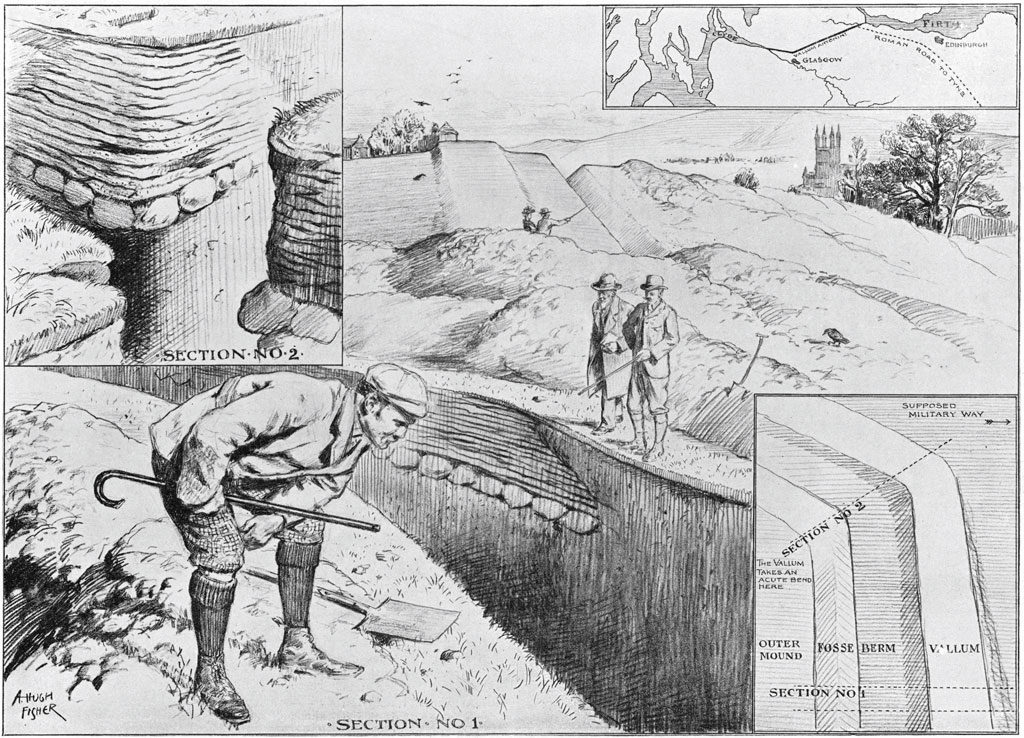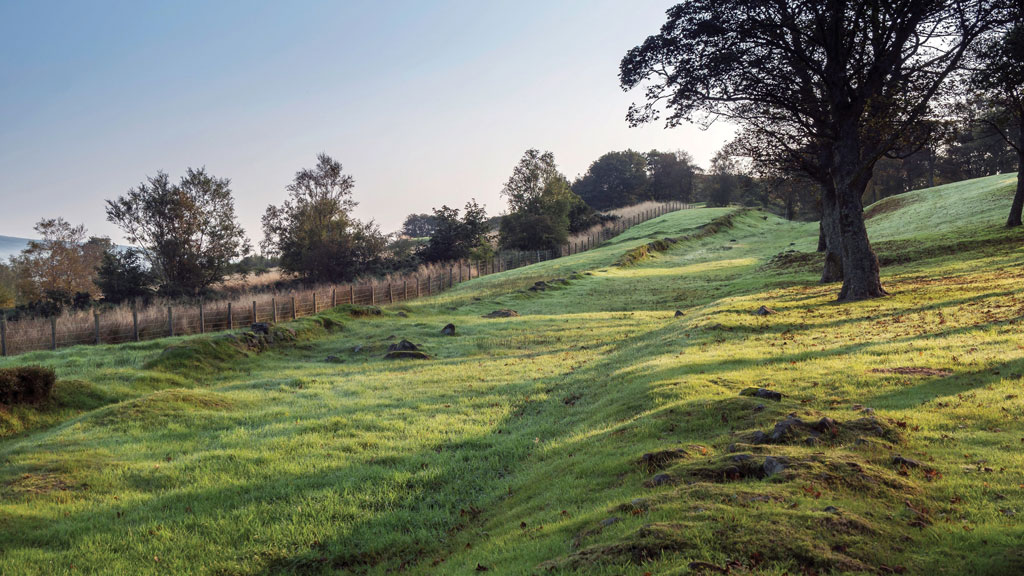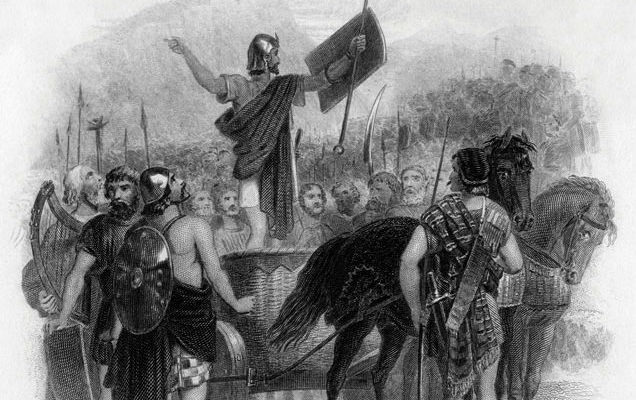Did the might of the Caledonians really keep their Roman invaders at bay, or is there more to the story than out and out Scottish victory? We look at the history of the Roman invasions of Scotland
MORE FROM SCOTLAND MAGAZINE
When it comes to the history of the Roman invasions of Scotland, it could be said that myth and legend have played their parts beautifully in shaping a somewhat idealistic version of events. Viewed from the northern side, it’s tempting to see Hadrian’s Wall as testament to the formidable natives of Caledonia – the area that would, roughly speaking, become Scotland and marked the northwest edge of the Roman world – who could not be conquered owing to brute strength and sheer bloody-mindedness.
While there’s truth in this, it’s far from the whole story; after all, Hadrian’s Wall wasn’t the most northerly frontier of Roman Britain, or Britannia. As Dr Fraser Hunter, principal curator of Roman Collections at the National Museum of Scotland in Edinburgh explains, “Hadrian’s Wall is a convenient line but Roman interests always stretched beyond it.”
We take a look at what really happened and question why, given that they were backed by one of the largest empires the world had seen to date, the Romans never succeeded in a sustained, all encompassing invasion to bring the wild lands of Caledonia under direct rule.
For starters, we know that the Romans did indeed successfully invade Scotland – it’s generally accepted that these forays took place between the first and third centuries AD. “Evidence confirms that the Romans campaigned in Scotland on at least four occasions,” says Dr Louisa Campbell, postdoctoral fellow in archaeology at the University of Glasgow, “Of that there is little doubt.”
And, as Hunter points out, these invasions were “hailed as a big success at the time from the Roman side. The problems were in conquering the whole country and in sustaining it in the longer term.”
It can certainly be said that the Caledonian tribes were a cause of persistent anxiety for successive emperors. In fact, the Romans unwittingly did a lot to unite the numerous tribes of what became the Caledonian Confederacy, brought together by their mutual hatred of their Roman aggressors. Campbell explains, “The situation in Scotland differs to that south of Hadrian’s Wall and there appears to have been more hostility to the presence of the Roman army in the north. People did not adopt Roman cultural values in the way that other regions did, including south of Hadrian’s Wall.”
Another clue to this hostility lies in the fact that the ruins of Roman settlements discovered across Scotland – largely from the Scottish Borders over the central belt, up through Perthshire and into Morayshire – are all military, not towns, villas or administrative centres for everyday local government, as was seen further south.

This need for a strong defence in Scotland was demonstrated with the building of the Antonine Wall, which commenced in AD 142. The wall was an enormous barrier of earthworks comprised of a deep ditch, high ramparts, forts and fortlets that ran for roughly 37 miles from the Firth of Forth to the Firth of Clyde. A mega engineering project, it was home to thousands of Roman legionnaires for around 20 years (although precise dates of occupation are still disputed). It was, for a while at least, the true final northwest frontier of the Roman empire and proof that the Romans far from failed in invading Scotland. Today, its ruins are counted among Scotland’s six UNESCO World Heritage sites.

Yet, even with this foothold and a large standing army, they didn’t establish Roman rule in the way they were so adept at doing elsewhere. This is, perhaps, the real mystery.
It’s important to remember that we’re talking about a series of incursions under different emperors, not one single campaign, which shows that the Romans both succeeded in invading on numerous occasions but failed each time at securing any significant long-term power or influence.
If we look back at the period of the Antonine Wall, this enormous structure quite literally divided local tribes by planting a giant frontier through their lands. This cut communication and upset traditional customs; not ideal for an invading army hoping to ingratiate itself.
There’s evidence that some savvy local leaders saw potential gain from their Roman subjugators who were, after all, pioneers of the post-victory battle for hearts and minds. The Romans had long practised winning round conquered peoples through delicate diplomatic means.
Hunter explains, “For the Romans, there were big advantages to reaching accommodations with local populations, especially local leaders, whether through trade or, more often, I would suggest, diplomacy – building connections and giving gifts.” He continues that for some natives “this could be a real benefit; Rome was an opportunity to access flashy goods, such as fine jewellery – a way of showing off.”
Campbell suggests, however, that “although Roman objects have been recovered from non-Roman sites, there is insufficient evidence to confirm sustained interaction.”
The unwillingness of the locals to embrace Roman rule and everything that came with it was a big factor in the failure of the Romans to completely conquer what would be Scotland. And this is just one piece of the puzzle.
“The reasons the Romans didn’t settle and stay are complex and multi-faceted”, explains Campbell, “and include a hostile reception from locals, challenging terrain and environment, pressures elsewhere in the empire and the changing strategic aims of successive emperors.”
There’s no question that the Romans succeeded in invading Scotland but they did fail to subdue the whole of Caledonia. Maybe, given the challenges faced, they never really intended to, realising that there was little to be gained given the difficulties involved. The real issue, then, is that the Romans never succeeded in cementing their power in the part of the country that they didcontrol. It’s on this point that the debate over whether the Roman invasions of Scotland were a failure or a success rumbles on.

Read more:
In search of treacle scones: Scottish Treacle Scones recipe
The Isle of Iona: Heaven in the Hebrides
Platinum Jubilee Celebrations 2022
MORE FROM SCOTLAND MAGAZINE

SCOTLAND MAGAZINE
Published six times a year, every issue of Scotland showcases its stunning landscapes and natural beauty, and delves deep into Scottish history. From mysterious clans and famous Scots (both past and present), to the hidden histories of the country’s greatest castles and houses, Scotland‘s pages brim with the soul and secrets of the country.
Scotland magazine captures the spirit of this wild and wonderful nation, explores its history and heritage and recommends great places to visit, so you feel at home here, wherever you are in the world.